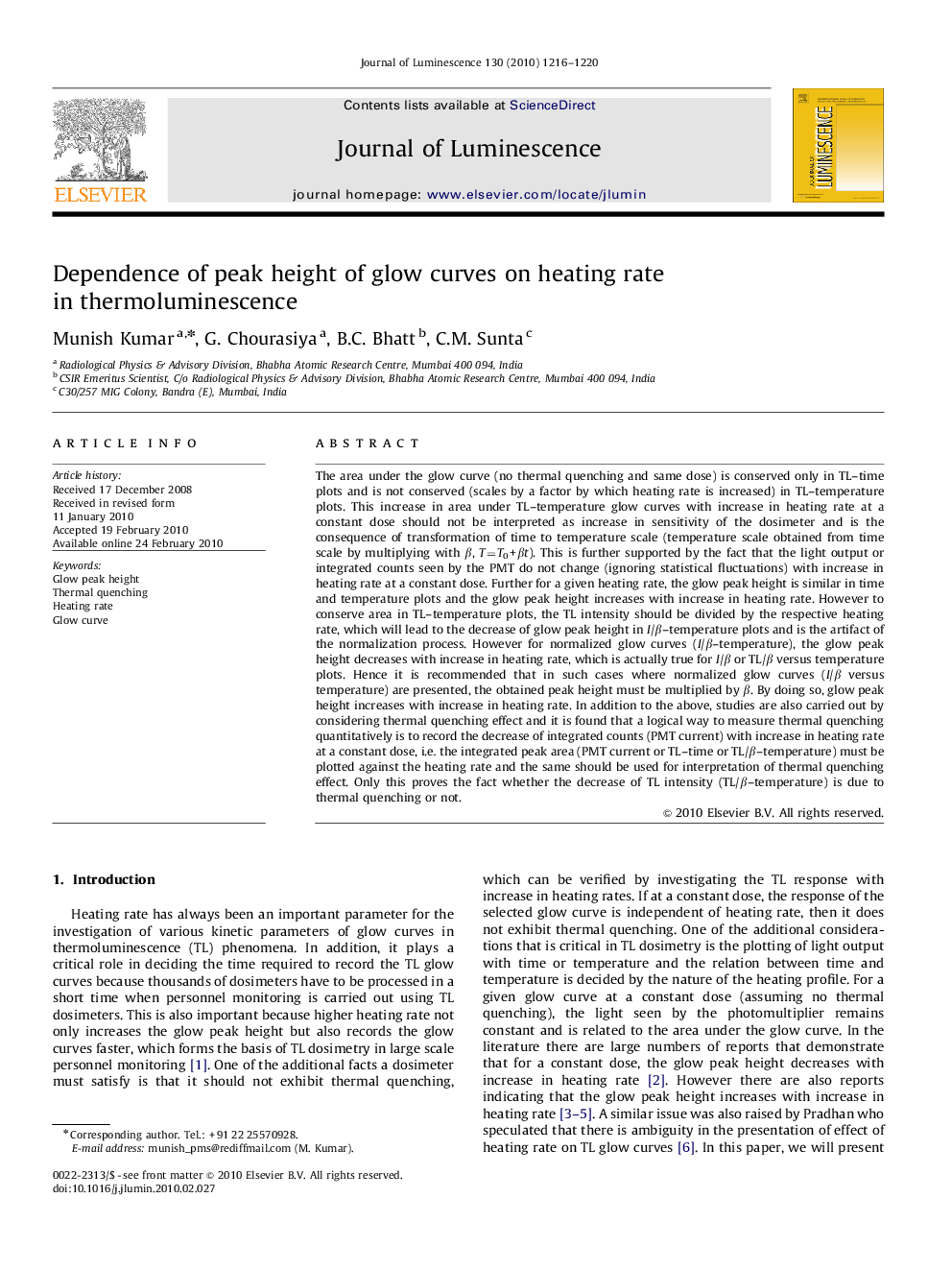| کد مقاله | کد نشریه | سال انتشار | مقاله انگلیسی | نسخه تمام متن |
|---|---|---|---|---|
| 5402367 | 1392732 | 2010 | 5 صفحه PDF | دانلود رایگان |
عنوان انگلیسی مقاله ISI
Dependence of peak height of glow curves on heating rate in thermoluminescence
دانلود مقاله + سفارش ترجمه
دانلود مقاله ISI انگلیسی
رایگان برای ایرانیان
موضوعات مرتبط
مهندسی و علوم پایه
شیمی
شیمی تئوریک و عملی
پیش نمایش صفحه اول مقاله

چکیده انگلیسی
The area under the glow curve (no thermal quenching and same dose) is conserved only in TL-time plots and is not conserved (scales by a factor by which heating rate is increased) in TL-temperature plots. This increase in area under TL-temperature glow curves with increase in heating rate at a constant dose should not be interpreted as increase in sensitivity of the dosimeter and is the consequence of transformation of time to temperature scale (temperature scale obtained from time scale by multiplying with β, T=T0+βt). This is further supported by the fact that the light output or integrated counts seen by the PMT do not change (ignoring statistical fluctuations) with increase in heating rate at a constant dose. Further for a given heating rate, the glow peak height is similar in time and temperature plots and the glow peak height increases with increase in heating rate. However to conserve area in TL-temperature plots, the TL intensity should be divided by the respective heating rate, which will lead to the decrease of glow peak height in I/β-temperature plots and is the artifact of the normalization process. However for normalized glow curves (I/β-temperature), the glow peak height decreases with increase in heating rate, which is actually true for I/β or TL/β versus temperature plots. Hence it is recommended that in such cases where normalized glow curves (I/β versus temperature) are presented, the obtained peak height must be multiplied by β. By doing so, glow peak height increases with increase in heating rate. In addition to the above, studies are also carried out by considering thermal quenching effect and it is found that a logical way to measure thermal quenching quantitatively is to record the decrease of integrated counts (PMT current) with increase in heating rate at a constant dose, i.e. the integrated peak area (PMT current or TL-time or TL/β-temperature) must be plotted against the heating rate and the same should be used for interpretation of thermal quenching effect. Only this proves the fact whether the decrease of TL intensity (TL/β-temperature) is due to thermal quenching or not.
ناشر
Database: Elsevier - ScienceDirect (ساینس دایرکت)
Journal: Journal of Luminescence - Volume 130, Issue 7, July 2010, Pages 1216-1220
Journal: Journal of Luminescence - Volume 130, Issue 7, July 2010, Pages 1216-1220
نویسندگان
Munish Kumar, G. Chourasiya, B.C. Bhatt, C.M. Sunta,